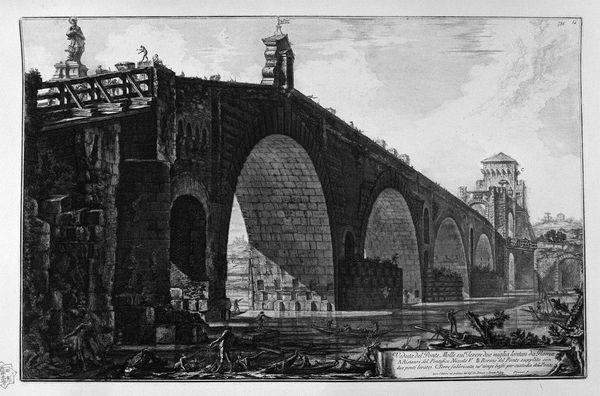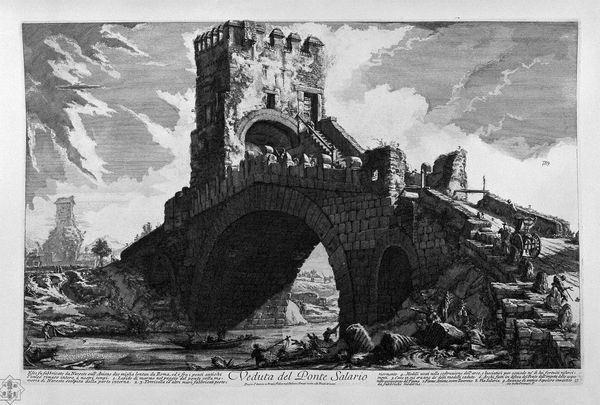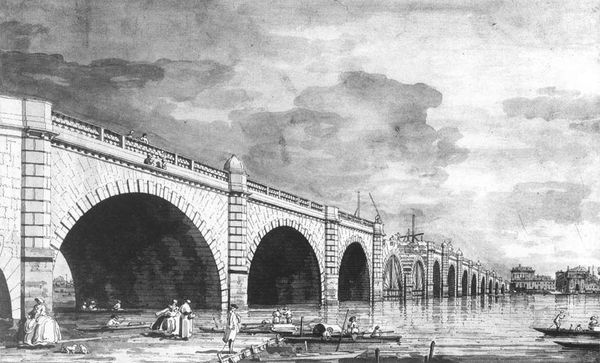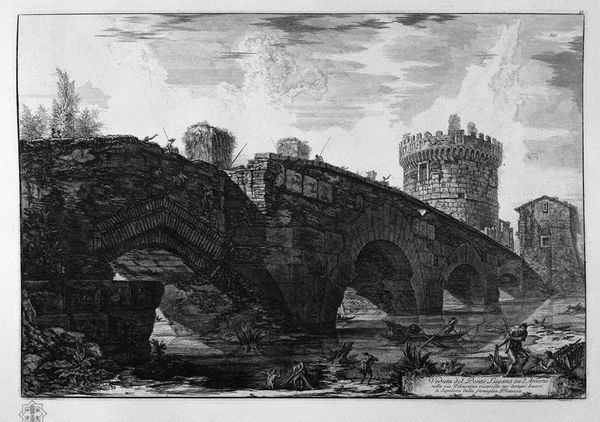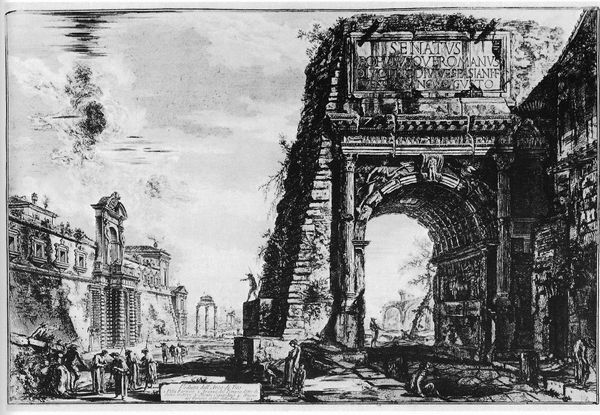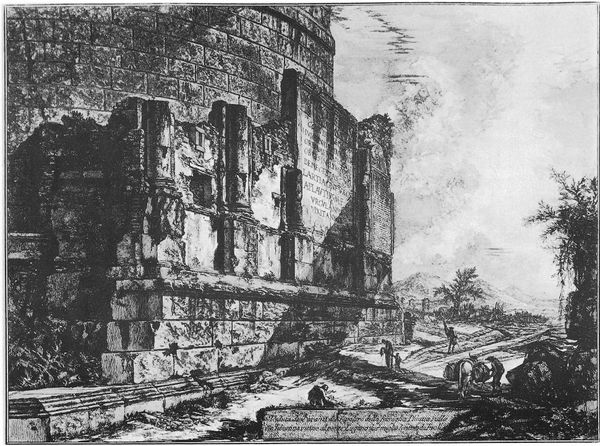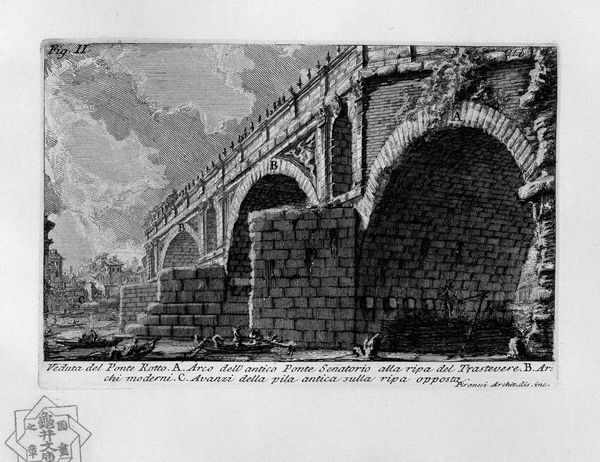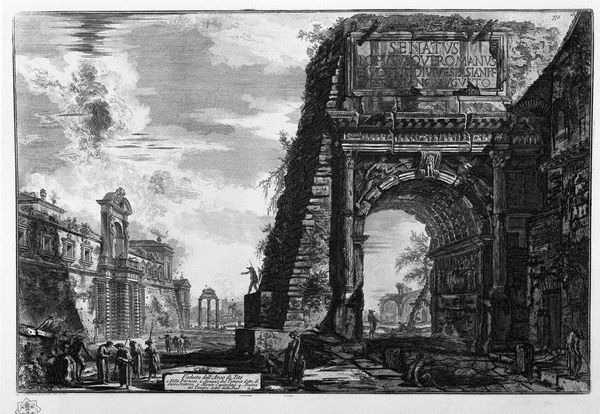
drawing, print, etching, engraving, architecture
#
drawing
# print
#
etching
#
sculpture
#
landscape
#
romanesque
#
carved into stone
#
arch
#
haunting style
#
engraving
#
architecture
#
statue
Copyright: Public domain
Curator: Look at this engraving, "Vedute di Roma," attributed to Giovanni Battista Piranesi. The scene presents a dramatic perspective of a Roman bridge. The bridge dominates the composition, its colossal arches looming over the water. Editor: It's quite arresting, isn't it? The sheer scale, coupled with the intricate detail, gives it a sense of romantic grandeur. But at the same time, I find it also hints at the decay. See how nature reclaims the artificial with plant overgrowths. Curator: Piranesi's focus wasn't necessarily decay, but more the monumentality of Roman architecture. He used such works to construct a sense of national pride. It's worth remembering that his Rome was still the capital of the Papal States, which would naturally benefit from those representations. These "views" sold well to visitors doing the Grand Tour and were vital in shaping impressions of Rome and of antiquity, and ultimately promoted the power of that history. Editor: Absolutely. However, consider that these grand views of antiquity also served a crucial function of asserting Roman dominance over a historical landscape ripe for a radical identity politics. In what sense does it connect or disconnect the power of the city of Rome from its inhabitants? Are they included or made other by the contrast? Curator: It's a print intended for a specific market. I suspect that Piranesi made decisions with awareness of economic markets in prints and representations of the landscape in mind. Editor: Right, by immortalizing structures rather than including any evidence of real daily living, doesn't it then function as an ideology meant to keep one social order cemented for an intended political effect? The artist sells not only images, but interpretations of the eternal Rome. Curator: His prints helped fuel the fascination with Roman antiquity that permeated 18th-century Europe. You see, his emphasis on the visual experience was designed for that visitor, shaping his or her perception of the city’s urban fabric and historical significance. It became the emblem, a logo. Editor: But is that perception really about a balanced reality, or a carefully crafted story? A constructed identity designed for a purpose, overlooking any inconvenient narratives? Curator: These prints undoubtedly shaped cultural perceptions. Editor: They acted as cultural gatekeepers, deciding who and what got remembered and valued. Curator: Indeed. Editor: A complex piece, fraught with the weight of history. Curator: Very much so.
Comments
No comments
Be the first to comment and join the conversation on the ultimate creative platform.
